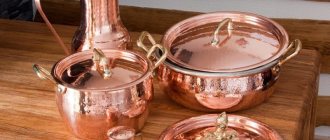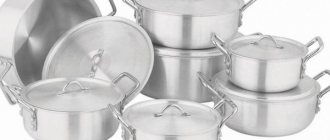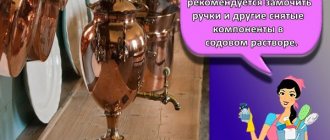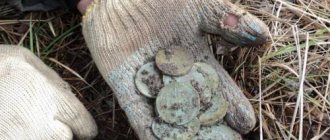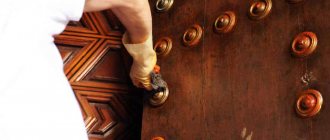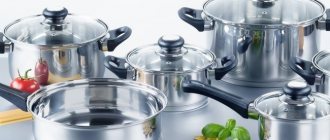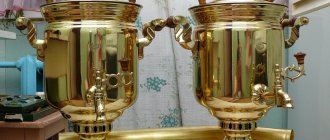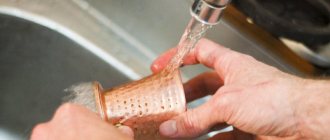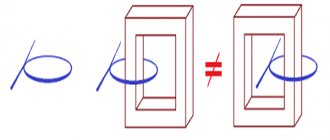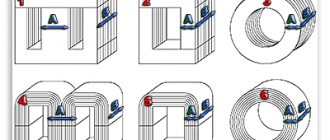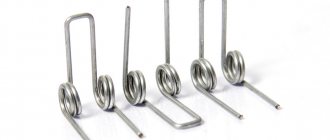One of the problems in numismatics is how to preserve the appearance of your collection, so that rare, hard-obtained items will please the eye for a long time. All coins, regardless of whether they are made of precious metals, copper, aluminum or nickel, require cleaning. You can carry out such an event at home yourself. Rules for removing corrosion, oxides, and grease depend primarily on the alloy from which the coin is made. Let's figure out how to clean a copper coin at home.
Copper coins
Before starting the cleaning itself, you need to carefully study all its aspects. After all, if carried out incorrectly, it may not only not return the original appearance, but also damage the product. One of the harmful layers on a copper coin is the layer of green copper, or verdigris. This is a layer of copper acetate oxide that appears on the coin under the influence of acetic acid vapor when interacting with oxygen.
Universal methods
There are several methods that are guaranteed not to damage an ancient coin. They are simple, effective and do not require expensive materials. You can find the ingredients needed for cleaning on your kitchen shelf or in your medicine cabinet.
Mechanical cleaning
To clean a copper coin you will need:
- a powerful magnifying glass, or better yet, a microscope;
- bristle brushes;
- "Paraloid B72"
- cotton swabs and disks;
- scrapers;
- toothpicks, boxwood and bone needles.
- needles made of soft metal - aluminum, brass, silver.
Before starting processing, dry the copper, saturate it with “Paraloid” and dry thoroughly again. Then:
- Place the coin under a magnifying glass and begin to carefully remove the plaque with the shebbers. Do not press or scratch the copper; proceed as carefully as possible.
- Remove soft deposits with boxwood needles, and use them to clean the relief of small designs and letters.
- Use toothpicks to remove residual dirt; polish the result with a brush and cotton swabs.
This work is painstaking, but the coin will turn out perfect!
Cleaning with kefir
This product works on simple stains and effectively dissolves greens.
- Take kefir. A drink of any fat content is suitable; if you want to save a little, use an expired one, nothing bad will happen.
- Place the coin in kefir and leave for several days. Over time, the drink around the metal will darken. Drain the dirty kefir, rinse the coin and repeat the procedure.
- Keep the product in the drink until the dirt dissolves. The process may take 10-15 days.
Instead of kefir, you can use any fermented milk product: whey, ayran, tan. What is important is not the taste of the drink, but the high level of acidity.
Neutral soap
Usually, laundry soap is used to clean old coins - it is effective and cheap. But if you are working with a valuable specimen, we recommend using a child’s one. This soap is softer and has a lower pH level, which means you probably won’t damage the metal.
- Grate the soap. Estimate the volume by eye: the composition should cover the coin completely.
- Brew the soap with boiling water and leave for a couple of hours. During this time, the mixture will turn into a soft viscous substance.
- Place the coin in the solution and leave it for at least a day. Light stains will disappear during this time. Durable plaque dissolves in 1-2 weeks, and serious deposits take tens of days.
- When the plaque has softened, remove the coin, rinse it under running water and gently polish it with a soft toothbrush. If the metal is clean, finish polishing with a wool rag or felt.
- Is there dirt on your coin? Return it to the soap solution and repeat the procedure. Amateur numismatists spend months cleaning especially “killed” specimens.
If the cleaning process takes a long time, do not forget to constantly check the coin. Excessive exposure to soap will not benefit copper.
Boiling with soda
This method is very simple to perform, but effective.
- Place 3-5 tablespoons of soda in 0.5 liters of clean water.
- Boil the solution and place a coin in it.
- Continue boiling until the buildup has dissolved. This usually takes 20-30 minutes, but it all depends on the extent of the damage.
- Cool the solution, remove the coins and rinse.
The cleaned metal should be polished with a soft, non-abrasive material - felt or a soft toothbrush.
Liquid soap with citric acid
Some types of liquid soap contain citric acid. This is exactly the option you will need. If you don’t find anything suitable, make “sour” soap yourself. To do this, add 1-2 grams of regular food grade citric acid per 100 grams of product.
- Pour soap into a glass to a level of 2-3 cm.
- Place a coin in the glass.
- Leave for 10-12 hours.
- After rinsing the copper, evaluate the result. If the metal is clean, polish it. If not, repeat the procedure.
Be careful: some stains, for example, green residue, are poorly removed by soap. If you see that some stains do not go away, but in general the metal has already been cleaned, stop the procedure. If you overdo it, you will ruin the copy. The acid will leave unsightly stains on it.
It is better to remove some complex stains mechanically.
"Trilon-B"
"Trilon B" is a specialized product designed to dissolve metal salts. This product can remove the most durable oxides and does not destroy copper.
To clean metal:
- Prepare a solution of Trilon B with a strength of 5%.
- Put coins in it.
- Hold for 2-3 minutes and check the result. Some oxides dissolve completely, others become brittle. You can remove them with a toothpick, brush or school eraser.
If the metal is clean, rinse it thoroughly. Problem areas can be wiped with a cotton swab dipped in Trilon solution.
Do not leave metal in Trilon B for a long time! This is a very possible remedy. If you overdo it, Trilon will soften the copper and dissolve the relief on the hammered elements.
To avoid mistakes, practice on the simplest copies that you don’t mind losing. And only after that move on to rare valuable coins.
We recommend: How to quickly peel pumpkin seeds?
Coca Cola
The most common Coca-Cola contains phosphoric acid. This is an effective solvent. The acid concentration in the drink is very low, so you are sure not to damage the metal. But you are unlikely to clean it from serious contaminants either.
The Coca-Cola method is good in cases where you need to refresh the product, remove minor darkening and light patina.
- Pour cola into the container.
- Put the coins there.
- Leave for at least 12 hours. You can do it for a day, nothing bad will happen.
- Remove the items, rinse under running water and polish with a cloth.
Advice. Cola removes limescale no worse than Domestos. But, unlike aggressive chemistry, it acts gently. If your coin is covered in calcium deposits, cola is an ideal option.
Recommendations for cleaning and care
The duty of any collector is to ensure that metal monetary exhibits are preserved in such a way that a noble patina can form. It is evidence of the age of the coin and will protect the exhibit from environmental influences. Unlike dirt stains, a true patina will cover not only the depressions on the surfaces, but also the unpatterned field.
- Metal money requires constant care, as it is very sensitive to environmental influences. Therefore, they should be stored in special packaging, and constant exposure to light and in an open state will lead to their oxidation and contamination.
- From time to time such banknotes should be cleaned. To do this, they are dipped into a container with a hot solution of laundry or baby soap and water. When the layer of dirt on the money softens a little, you need to very carefully clean all the dirt with a soft sponge.
- For silver coins with purity less than 625, ammonia is suitable. And higher purity silver coins can be cleaned with lemon juice or kept in it for a while.
It is best to use special products for caring for coins. Such drugs are sold in specialized stores. A novice numismatist can use improvised means to remove light stains.
Effective methods, but dangerous
With these methods you will remove the most difficult stains. But if you make a mistake, you will probably damage the coin. Weigh all the risks before getting started.
Ammonia
Use this method on very dirty coins. Ammonia, also known as an alcohol solution of ammonia, is a fairly powerful solvent; it can easily remove the most durable plaque.
To remove dirt:
- Prepare a jar that can be closed with a lid.
- Pour ammonia there. The liquid level should be such as to cover the coin with a margin.
- Place the product in ammonia. Soon you will see that the liquid has turned green. Don't be alarmed, this is normal.
- Cover the jar with a lid to prevent the ammonia from evaporating.
- Soak the coin in ammonia for 5-10 minutes. It can be longer if there is really a lot of plaque. But be careful not to overdo it. You want to dissolve external contaminants without damaging the metal. The exposure time depends on the amount of plaque and dirt.
- When the product is cleaned, do not remove the coin under any circumstances! Place the jar under running water and keep it there until the ammonia rinses out.
- Take out the product, rinse, wipe.
If you are not satisfied with the result, repeat the procedure.
Ammonia is especially effective at removing copper oxide. They look like cherry red layers.
Important. Copper coated with ammonia should never come into contact with air. The metal will begin to oxidize and dark, untidy spots will appear on it. It is very difficult to remove them.
Vinegar and citric acid
Using vinegar will quickly clean your coins, but you risk ruining the coin. The acid will remove plaque and greens, but will open up all the irregularities and cavities on the metal.
Are you ready to take a risk? Then:
- Add 1 tbsp to 1 liter of water. l vinegar. Use regular store-bought 9% concentration.
- Place a coin in the vinegar solution.
- Hold for 5 minutes.
- Rinse and brush with a toothbrush.
If individual plaque fragments do not dissolve, but have softened, remove them with a pin or wooden toothpick. Wipe problem areas with a cotton swab dipped in an acidic solution. This way you will remove local contamination without damaging the already cleaned metal.
If you don't have vinegar, use citric acid. They are very similar in type of impact. Dissolve 1 tsp in 1 liter of water. acid and proceed according to the scheme described above.
Rules and methods of patination
It's no secret that metals oxidize over time when exposed to air and water. But this happens differently for different alloys. If steel or iron is destroyed as a result of such exposure, then the copper is covered with a dark protective film. It is this layer that gives a special chic to antique items, indicating their authenticity.
Often, in the desire to remove dirt from a coin, it is subjected to mechanical processing, as a result of which the patina is also removed. It is quite possible to return the noble insignia after this. Often, artificial patination of copper coins is justified from an aesthetic point of view, since it helps to hide the results of their cleaning.
Required Tools
Depending on the chosen method of applying patina, it is necessary to prepare tools and materials. The minimum set includes:
- glass or plastic container;
- selected chemical reagent;
- beaker;
- stir sticks;
- synthetic brush;
- degreasing liquid;
- latex gloves;
- respirator;
- soap;
- sponge;
- unnecessary clean rags;
- cotton pads.
When all this is collected, you can begin the experiment.
Patina process
Of course, the presence of a “native” layer of oxides is much preferable, because it not only indicates the value of the specimen, but also reliably protects the coin from damage. If it is possible to preserve the natural plaque, then it is better not to touch it. When artificial aging is unavoidable, patina is applied independently. Patination is usually carried out using one of the following methods:
- dip coins into the prepared solution;
- place the monetary sample in a vapor-gas environment;
- apply the composition to the surface with a brush.
The quality of the final result directly depends on the method of obtaining the patina.
The quality of the final result directly depends on the method of obtaining the patina and on how well the coin was prepared.
First of all, the coins are cleaned of fat and oxides. This is done with a cotton pad soaked in white spirit or gasoline. These liquids are good at removing greasy marks that interfere with the oxidation process and the reaction of the patination solution with copper. It is also necessary to wear gloves, because... the patina will lie unevenly on fingerprints left behind.
Paste GOI
This method is used by newbie collectors. GOI paste removes blackness from metal and makes it bright and shiny. The paste does not remove serious oxides or calcium deposits.
But experienced numismatists do not approve of the use of this tool. GOI paste is soft but abrasive. During processing, you will remove light dirt, but damage the protruding elements of the coin: the edge and the design. The more you try, the more actively you remove dirt, the more you smooth out the chasing.
At the end you will get a shiny coin with “licked” small details. This is not a problem when you are cleaning your silverware. But for collectible coins this result is unacceptable.
The exception is when you need to remove a small stain on the smooth part of the coins. In this case, dip a cotton swab into the paste and carefully wipe the problem area with the tip.
How not to clean copper coins
Here's what not to do when cleaning copper coins:
- Using a metal polish may seem like one of the most obvious ways to clean coins. After all, they are made of metal. But these cleaning products often contain harsh chemicals that can cause serious and irreversible damage to the product;
- use toothpaste - toothpaste is very abrasive. This may make the coins shiny but cause significant damage to the surface.
Unusual ways
Some old coin enthusiasts are experimenting with cleaning methods. They put metal in tomatoes, oranges and apples, poured grape juice and white wine. Surprisingly, these methods can work. The products listed above contain a high level of acid, which dissolves plaque. But the risk is very high:
- You will not be able to determine the acidity level of the environment. Ripe kiwi, for example, has a pleasant sweet and sour taste, but in fact there is a very high concentration of fruit acids. If you put a coin in a qiwi, you will probably ruin it.
- You do not know what active chemical elements are included in the composition of the improvised “cleaning agent”. When coins come into contact with fruits and vegetables, they may turn black, green, or stained.
Is it worth conducting such experiments at home? You decide.
Soap solution for coins (extract)
It allows you to clean the most stubborn stains on the surface of metal money, but it has advantages and disadvantages. It must be said that the method is the most gentle, allowing not only to preserve the features, but also to return the coin to its original appearance, if, of course, it was not mechanically damaged.
Start any cleaning at home with a soap solution. Soaking in a paste made from soap is a more effective cleaning method. You will need:
- Laundry soap.
- Water 100–150 ml.
Grate the soap on a coarse grater, pour in water and mix the composition. After a while, when the soap swells, immerse the coins in the resulting slurry. If necessary, add water to the mixture; the consistency should be slightly thicker than sour cream.
After 2 days, remove them from the mixture, scrub them gently with a soft-bristled toothbrush, and immerse them in the soap mixture again. Please note that the prepared mixture dries out over time; add water so that the mixture does not lose its consistency. The duration of exposure depends on the degree of contamination. Sometimes it takes up to 1.5 months, which is an obvious disadvantage of this method. But the result will be excellent, and your money will not be damaged.
The method will help to put in order even royal coins, the integrity of which is especially important to preserve.
Organic oil
Collectors use petroleum jelly or glycerin, but really anything will do: highly purified vegetable oil, cosmetic oil, or Johnson's Baby oil.
- Pour oil into a container and place a coin in it.
- Wait a week or two.
- Clean the copper with a scraper.
In this way you will remove minor plaque and darkening.
If soaking gives poor results, boil the coins in oil. This method is effective for cleaning well-preserved but dirty items. If you boil a heavily damaged coin, you will dissolve not only the plaque, but also the top layer of copper along with the coinage.
The coin is dipped into boiling oil for 5-7 minutes. During this time, the plaque turns into a sticky dense mass. Remove it with a brush and soapy water.
Soon you will have black but pure copper in your hands. Advice. The vapors from the oil are very flammable. During boiling, the container with oil must be covered with a lid.
How to remove rust
Acids are used against corrosive growths - hydrochloric, formic, sulfuric. Aggressive compounds are diluted with water, and the condition of the coin is constantly monitored in order to stop the session in time. After peeling off the dirty layers, the active ingredient is neutralized with soda or soap. At home, a thin layer of rust is removed using available means - Coca-Cola, kefir: these drinks also contain acid (phosphoric acid, lactic acid, respectively). The specimen is kept in an acidic product, turning over periodically. When the rusty layers begin to peel off, the procedure is interrupted. Dirt is removed with a soft brush.
Household chemicals
Metal can be cleaned with liquid soap or dishwashing detergent. In this safe way, you will remove all organic contaminants and soften plaque.
- Dip the coins in the detergent and leave for a few days.
- Wipe the metal with a brush or eraser.
- Dip in soap again if necessary.
We recommend: How can you dry walnuts using a dryer and oven?
Unfortunately, soap does not work with complex insoluble compounds. In this case, inexperienced collectors try to clean the metal with abrasives - for example, Pemolux. Don't do this! Harsh products will scratch the copper and “erase” small details of the coinage.
Preparing for cleaning
Every metal has the property of oxidizing and becoming covered with a green coating. Oxidation is sometimes confused with regular old, stagnant dirt. Therefore, first you need to check this option, try washing it with plain water, you can use a toothbrush or a rag for this. If this fails, then you need to clean the coin from green plaque and oxide in other ways.
At this stage, the main thing is to strictly follow the instructions, especially for ancient coins, which can be damaged much more easily. The method of cleaning will depend on what kind of erosion we are dealing with.
Among other things, stock up on dishes, unnecessary newspaper and a soft cloth. It would be a good idea to have gloves at the ready to protect your hands.
Electrolysis
This is a tough but effective method. If everything goes well, you will remove the most stubborn oxides, but if everything fails, you will ruin the specimen.
For electrolysis you will need:
- plastic or glass solution tray;
- alligator clips or strong paper clips;
- 12 volt power supply;
- metal plate;
- soda;
- distilled water.
First prepare the solution: put 2/3 tbsp in 0.5 liters of water. l. soda Pour the liquid into the bath.
Then strip the wires on the power supply and identify + and -. To do this, place the stripped ends in the solution and apply power. The wire around which the water is bubbling is +.
Ready? Using paper clips or alligator clips, secure a metal plate to one of the wires and a coin to the other.
If you hang a coin on +, the reaction will take place very quickly. But in this case, the risk of overdoing it and ruining the copy increases. Set it to - and the process will slow down. You will spend a lot of time, but you will be able to control the process.
Dip the plate and coin into the solution, apply voltage to the wires and wait 10-15 minutes. Then take out the coin, wipe it and carefully polish it. If necessary, electrolyze the metal again, but replace the cloudy solution with a fresh one.
Remember: during the processing process you destroy not only oxides and plaque, but also the metal itself. Use this method only for relatively new and inexpensive collection items.
Cleaning with special means
Noble metals and alloys are treated with special cleaning compounds.
Additional Information! Special agents are diluted according to instructions. The artifacts are periodically turned over to ensure uniform coverage of the liquid. To enhance the effect of the drugs and speed up cleaning, coins are first degreased or washed in soap suds.
Effective means for processing metal money. The
following preparations will quickly destroy traces of oxidation, corrosion, and wash away dirt, without damaging the material:
- Trilon-B cleans brass, nickel silver, cupronickel from rust without affecting the metal; returns the original color to products with minimal damage; Coppers after cleaning get a pinkish tint.
- Silbo – liquid for copper and nickel money; removes plaque and rust.
- Asidol-M – contains ammonia, surfactants, wax; Cleans and polishes banknotes made of steel and non-ferrous alloys in a couple of minutes.
- Shine Coins - under this brand, separate compositions are produced for products made of silver, copper, nickel, bronze and brass.
- Nanopatina is a means for processing copper. Contains copper sulfate, active ingredients. Apply to a degreased and washed surface. After the procedure, air dry for 5 minutes, then wash.
- The paste-like preparation “USSR” based on nanodispersed abrasive contains tartaric acid salts and sodium bicarbonate. Cleans copper, bronze, brass.
- Leuchtturm - a series of liquids for products made of gold, silver, copper; preparations contain different doses of inorganic acidic substances, sulfur compounds, softeners, nychtinol (<5%); restores color and does not add unnatural gloss.
- Ointments, powdery substances, liquids from the Etalon series (“Gold”, “Silver”, “Copper”) remove traces of rust; restore the natural shine of metal coatings; form a protective layer - patina.
A universal preparation for cleaning metals and alloys,
Nanotrilan paste contains oxalic acid and microdispersed abrasive substances. Suitable for cleaning USSR money, new 10-ruble and foreign banknotes. Apply to the contaminated surface and gently rub with flannel.
Drying coins
You have cleaned all the dirt, washed the coins and rinsed them. But this is not enough! While washing, you took the coins with your hands, which means you left faint traces of grease and sweat on them. After a few years, such prints will turn into a black, indelible coating. To prevent this from happening:
- Degrease the metal with alcohol or acetone. But don't rub the coins with a rag! Use only cotton swabs.
- Dry the copper. To speed up the process, use a hairdryer or a regular table lamp - it provides enough heat. Handle coins either with sterile gloved hands or with tweezers.
Processing 1 copy will take you 1-3 minutes.
How to store coins after cleaning?
You cannot store the collection on a shelf under glass. Coins are placed in cotton bags, holders or in plastic capsules of coolers, each copy separately.
Place the packaged collection in a special tablet or in a regular box with cells and place it in a warm, dry place. There should be no temperature changes there.
Serious collectors store their collections in special containers that protect metals from corrosion - for example, Intercept-shield.
